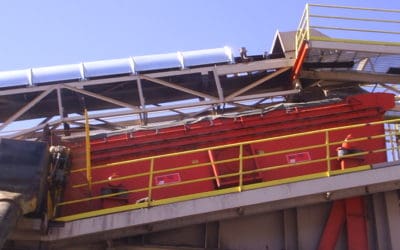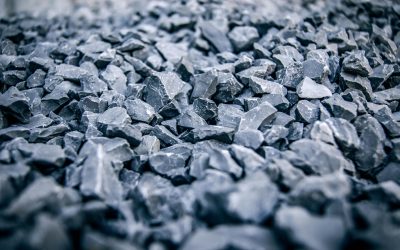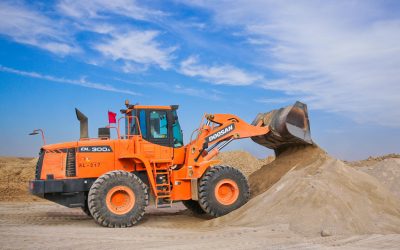Whether it’s filtering fine particles or removing oversized debris, industrial screening plays a key role in maintaining product quality and efficiency across a wide range of industries. Sectors – like recycling, aggregates, mining, refuse-derived fuel (RDF) processing, and food manufacturing – all rely heavily on effective screening to meet operational standards and customer expectations.
Understanding the fundamentals of industrial screening is essential for optimizing performance, reducing downtime, and achieving long-term success in any material-handling operation.
What is Industrial Screening?
Industrial screening is the process of separating materials into different size fractions or categories based on specific physical characteristics, such as size, shape, or other properties. Its main purpose is to ensure that only materials meeting certain specifications proceed through production or are prepared for sale, while oversized or undersized materials are filtered out for further processing or disposal.
The basic principle behind screening involves passing bulk materials over or through a screening surface — such as mesh, perforated plates, or vibrating screens — so that particles smaller than the openings fall through, while larger particles are retained. In some cases, screening also helps classify materials based on shape or density, depending on the equipment used.
Industrial screening is widely used across various sectors and handles a broad range of materials. Common examples include:
- Compost and soil in waste management
- Minerals and ores in mining
- Refuse-derived fuel (RDF) in energy production
- Wood and gravel in construction
Different Types of Industrial Screening Equipment
Vibrating Screens
These screens use a vibrating motor or mechanism to move material across a screening surface, encouraging smaller particles to fall through openings while larger ones move along the surface. They can be configured in single or multiple layers to handle different sizes in one pass. Typical use cases include:
- Aggregates and mining (sorting gravel, crushed stone, ores)
- Recycling (separating plastics, metals)
- Food processing (sorting grains, powders)
Trommel Screens
Trommels consist of a rotating cylindrical drum with perforated sides. As material enters the drum, it tumbles and rolls, allowing smaller particles to fall through the holes while larger pieces exit the other end. Typical use cases include:
- Compost and soil screening
- Municipal solid waste processing
- Refuse-derived fuel (RDF) preparation
- Sand and gravel separation
Disc Screens
Disc screens use a series of rotating discs mounted on parallel shafts. The spaces between the discs allow undersized material to fall through while larger or elongated pieces are carried forward. The rotating motion also helps break up clumps of material. Typical use cases include:
- Waste wood and biomass screening
- Recycling (especially bulky materials)
- Pulp and paper industry (removing contaminants)
Flip-Flow/High-Frequency Screens
High-frequency or flip-flow screens have flexible screening mats that are tensioned and loosened in a rapid, wave-like motion. This aggressive movement helps prevent material from clogging the screen and enhances the separation of fine or difficult-to-screen materials. Typical use cases include:
- Wet or sticky materials (e.g., clay, compost)
- Fine particle separation (e.g., sand, silica)
- Mining (separating fine ores)
Key Components of Screening Equipment
Screen Media
This is the surface where material separation actually occurs. The choice of media determines the screen’s effectiveness, durability, and suitability for different materials.
- Wire mesh: This is a common choice for dry, granular materials, like sand or gravel. The mesh offers good precision and is available in a wide range of aperture sizes, but it can wear out faster with abrasive materials.
- Polyurethane panels: Known for high durability and flexibility, these are ideal for wet, sticky, or abrasive materials and are widely used in industries, like recycling and mining. Polyurethane resists clogging and extends wear life.
- Perforated plate: Made from steel or other metals, this is a rigid option suited to coarse materials and heavy-duty applications. It withstands impact well and is often used when strength and longevity are key.
Drive Systems
Powers the movement of the screen to enable material separation. The type of drive affects the screening efficiency and material flow.
- Vibratory motors: These create linear or circular vibrations and are widely used for many screening applications. They’re simple and effective for dry materials.
- Exciter mechanisms: They offer more powerful and customizable motion and are often found in large, heavy-duty screens.
- Rotary/drum drives: They’re used in trommel or rotary screens where the screening is done by rotating the drum. These drives are suitable for bulky or mixed-material streams.
- Flip-flow drives: Specialized systems, like the BIVITEC®, use flexible mats and high-frequency vibration to tackle wet, difficult-to-screen materials.
Feed and Discharge Arrangements
Ensures smooth entry of material onto the screen and efficient exit of separated fractions.
- Feed hoppers/chutes: Even, controlled feeding is critical for maximizing screen performance. A well-designed feed arrangement prevents overloading and promotes even distribution across the screen.
- Discharge chutes/outlets: Separate oversize and undersize material streams efficiently. The discharge system should prevent blockages and spillage and direct materials to their next processing step.
- Bypass or oversize routes: Some systems include bypass options to allow certain materials to skip the screen or be reprocessed if needed.
Benefits of Effective Industrial Screening
- Enhanced product quality: Screening ensures that only in-spec material moves forward in production. This reduces contamination and improves the consistency and quality of the final product.
- Improved process efficiency: Efficient screening removes unwanted fines or oversize material early in the process, reducing unnecessary wear on downstream equipment (like crushers or conveyors). This streamlines operations and helps maintain optimal material flow, saving both time and energy.
- Maximized resource recovery: Precise screening boosts recovery rates by ensuring valuable materials are properly separated from waste streams. This enhances profitability and supports sustainability goals.
- Lower maintenance and downtime: Well-designed screening systems with appropriate screen media reduce blinding, clogging, and excessive wear, which means less frequent maintenance and fewer unexpected stoppages.
- Flexibility and scalability: Modern systems can be adjusted or upgraded with different screen media or modular components, making it easier to handle changes in material streams or production demands. This flexibility helps future-proof your investment.
- Compliance with industry standards: For industries with strict regulatory requirements, effective screening helps ensure compliance by delivering consistently clean and well-classified material outputs.
Common Challenges
- Screen blinding and clogging: Fine, sticky, or moist materials can block screen apertures, reducing efficiency and causing throughput delays.
- Wear and tear on screen media: Abrasive materials (like minerals, sand, or glass) can quickly wear down wire mesh or other screen surfaces, leading to frequent replacements and potential downtime.
- Material flow issues: Uneven feeding, surges in material volume, or inconsistent particle sizes can lead to inefficient separation and overloading of screens, which stresses both the screen media and the mechanical components.
- Handling mixed material streams: Recycling and RDF facilities often deal with mixed or unpredictable materials. This variability can compromise screening accuracy and make it hard to maintain performance without frequent adjustments.
- High energy consumption: Some screening systems — especially high-capacity or high-frequency designs — can be energy-intensive, increasing operational costs if not optimized.
- Maintenance and access difficulties: In tight or older facilities, accessing screens for maintenance or changeouts can be physically difficult, increasing labor time and the likelihood of prolonged downtime.
AEI’s Industrial Screening Solutions
The BIVITEC is particularly beneficial in industries where wet, sticky, or tricky materials pose a challenge — like recycling, composting, waste-to-energy (RDF), and mining — offering a more reliable, low-maintenance, and long-lasting screening solution. Its standout feature is its dual-vibratory, flip-flow action, which uses flexible polyurethane mats that move dynamically. This keeps sticky, damp, or fine materials constantly agitated, virtually eliminating blinding and clogging.
The Freedom Disc Screen is best suited for high-volume, mixed-material applications, like construction and demolition (C&D) waste, mulch and biomass screening, and single-stream recycling — where its anti-wrapping technology, durability, and precision help overcome common screening headaches. With heavy-duty, abrasion-resistant materials used for the discs and shafts, the Freedom Disc Screen is built for longevity.
If you have any questions about our equipment, please don’t hesitate to reach out to us.


